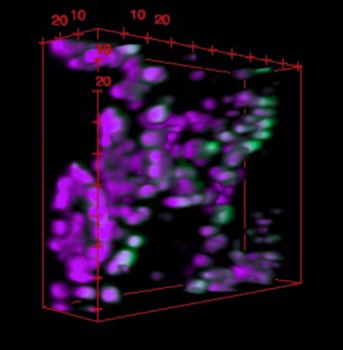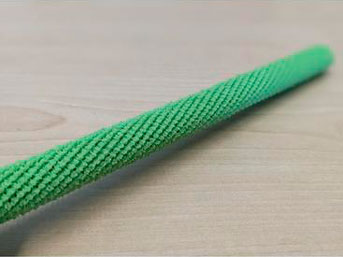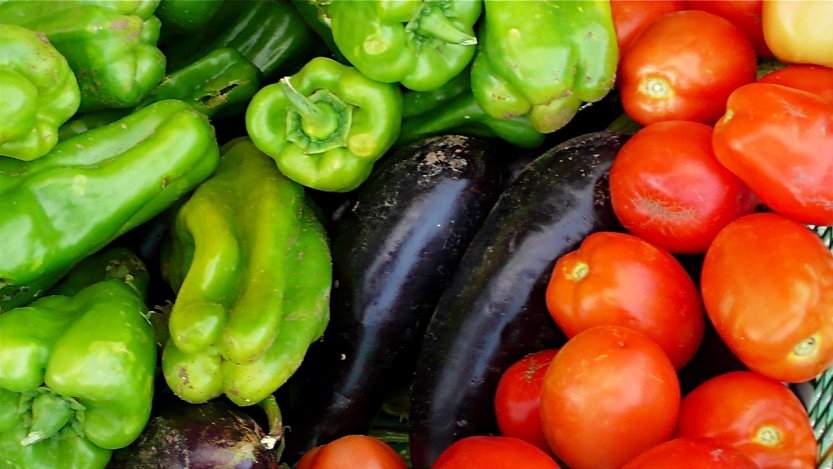Grow and Eat Your Own Vaccines? – Oral Vaccination with Transgenic Vegetables
The future of vaccines may look more like eating a salad than getting a shot in the arm. UC Riverside scientists are studying whether they can turn edible plants like lettuce into mRNA vaccine factories.
Messenger RNA or mRNA technology, used in COVID-19 vaccines, works by teaching our cells to recognize and protect us against infectious diseases.
One of the challenges with this new technology is that it must be kept cold to maintain stability during transport and storage. If this new project is successful, plant-based mRNA vaccines — which can be eaten — could overcome this challenge with the ability to be stored at room temperature.
The project’s goals, made possible by a $500,000 grant from the National Science Foundation, are threefold: showing that DNA containing the mRNA vaccines can be successfully delivered into the part of plant cells where it will replicate, demonstrating the plants can produce enough mRNA to rival a traditional shot, and finally, determining the right dosage.

Credit: Israel Santana/UC Riverside
“Ideally, a single plant would produce enough mRNA to vaccinate a single person,” said Juan Pablo Giraldo, an associate professor in UC Riverside’s Department of Botany and Plant Sciences who is leading the research, done in collaboration with scientists from UC San Diego and Carnegie Mellon University.
“We are testing this approach with spinach and lettuce and have long-term goals of people growing it in their own gardens,” Giraldo said. “Farmers could also eventually grow entire fields of it.”
Key to making this work are chloroplasts — small organs in plant cells that convert sunlight into energy the plant can use. “They’re tiny, solar-powered factories that produce sugar and other molecules which allow the plant to grow,” Giraldo said. “They’re also an untapped source for making desirable molecules.”
In the past, Giraldo has shown that it is possible for chloroplasts to express genes that aren’t naturally part of the plant. He and his colleagues did this by sending foreign genetic material into plant cells inside a protective casing. Determining the optimal properties of these casings for delivery into plant cells is a specialty of Giraldo’s laboratory.
For this project Giraldo teamed up with Nicole Steinmetz, a UC San Diego professor of nanoengineering, to utilize nanotechnologies engineered by her team that will deliver genetic material to the chloroplasts.

Credit: Nicole Steinmetz/UC San Diego
“Our idea is to repurpose naturally occurring nanoparticles, namely plant viruses, for gene delivery to plants,” Steinmetz said. “Some engineering goes into this to make the nanoparticles go to the chloroplasts and also to render them non-infectious toward the plants.”
For Giraldo, the chance to develop this idea with mRNA is the culmination of a dream. “One of the reasons I started working in nanotechnology was so I could apply it to plants and create new technology solutions. Not just for food, but for high-value products as well, like pharmaceuticals,” Giraldo said.
Giraldo is also co-leading a related project using nanomaterials to deliver nitrogen, a fertilizer, directly to chloroplasts, where plants need it most.
Nitrogen is limited in the environment, but plants need it to grow. Most farmers apply nitrogen to the soil. As a result, roughly half of it ends up in groundwater, contaminating waterways, causing algae blooms, and interacting with other organisms. It also produces nitrous oxide, another pollutant.
This alternative approach would get nitrogen into the chloroplasts through the leaves and control its release, a much more efficient mode of application that could help farmers and improve the environment.
The National Science Foundation has granted Giraldo and his colleagues $1.6 million to develop this targeted nitrogen delivery technology.
“I’m very excited about all of this research,” Giraldo said. “I think it could have a huge impact on peoples’ lives.”
The University of California opened its doors in 1869 with just 10 faculty members and 40 students. Today, the UC system has more than 280,000 students and 227,000 faculty and staff, with 2.0 million alumni living and working around the world. Source
Tennessee lawmaker wants rules in place for the possibility of vaccines in produce
Tennessee House Bill HB1894
On 21 February 2024, the Tennessee House of Representatives passed a bill (HB1894) on food labeling sponsored by lawmaker Scott Cepicky. The bill “prohibits the manufacture, sale, or delivery, holding, or offering for sale of any food that contains a vaccine or vaccine material unless the food labeling contains a conspicuous notification of the presence of the vaccine or vaccine material in the food”.
NASHVILLE, Tenn. (WTVF — Some Tennessee lawmakers are wanting rules in place to prevent vaccines from possibly being put in fruits and vegetables.
There are no vaccines in your lettuce or tomatoes when you go grocery shopping right now, but Representative Scott Cepicky believes it could happen since researchers in California have “perfected putting vaccines into certain foods.”
The representative crafted what he calls a consumer protection bill to make sure you know whether you’re picking up a tomato with a vaccine in it or not in the event vaccines are admitted in your favorite foods.
He says there need to be safety measures in place.
“If you go to buy tomatoes, and there’s a polio vaccine in there, that you’re aware of what you’re buying as a polio vaccine,” said Rep. Cepicky. “The problem we have is if it’s not treated as a pharmaceutical… How many tomatoes do I have to eat to get the proper dosage versus how many tomatoes do you have to eat? And if you eat too many, do you get an overdose?”
Representative John Ray Clemmons questioned whether having vaccines in fruits and vegetables is legal in TN and if not, is the legislation to protect Tennesseans necessary. Cepicky says having something in place is better than not.
The protection bill passed its latest House committee vote just last week. source
A review of oral vaccination with transgenic vegetables by the US GOVERNMENT
Abstract
Mucosal immunization of the gastrointestinal tract is an effective way to stimulate local and systemic immune responses. Oral vaccines must be formulated in such a way that antigens are protected as they pass through the adverse environment of the stomach and are delivered to the mucosal inductive sites. Vaccine antigens cloned into edible transgenic plants are a promising new delivery system for oral vaccines. Such vaccines could be safe, inexpensive, and multicomponent.
Similar articles
-
Immunogenicity in humans of a recombinant bacterial antigen delivered in a transgenic potato.
Nat Med. 1998 May;4(5):607-9. doi: 10.1038/nm0598-607.PMID: 9585236 Clinical Trial. -
Oral immunisation of naive and primed animals with transgenic potato tubers expressing LT-B.
Vaccine. 2001 Mar 21;19(17-19):2749-55. doi: 10.1016/s0264-410x(00)00513-2.PMID: 11257419 -
Vaccine. 1998 Aug;16(13):1336-43. doi: 10.1016/s0264-410x(98)80020-0.PMID: 9682399
-
Targeting of plant-derived vaccine antigens to immunoresponsive mucosal sites.
Vaccine. 2003 Jan 30;21(7-8):809-11. doi: 10.1016/s0264-410x(02)00604-7.PMID: 12531365 Review. -
Methods. 1999 Sep;19(1):148-55. doi: 10.1006/meth.1999.0840.PMID: 10525451 Review.
Cited by
-
Transgenic peanut (Arachis hypogaea L.) expressing the urease subunit B gene of Helicobacter pylori.
Curr Microbiol. 2011 Oct;63(4):387-91. doi: 10.1007/s00284-011-9991-4. Epub 2011 Aug 11.PMID: 21833666 -
Clin Vaccine Immunol. 2008 May;15(5):852-8. doi: 10.1128/CVI.00382-07. Epub 2008 Mar 26.PMID: 18367580 Free PMC article.
-
Oral immunization with hepatitis B surface antigen expressed in transgenic plants.
Proc Natl Acad Sci U S A. 2001 Sep 25;98(20):11539-44. doi: 10.1073/pnas.191617598. Epub 2001 Sep 11.PMID: 11553782 Free PMC article. -
Orally administered Giardia duodenalis extracts enhance an antigen-specific antibody response.
Infect Immun. 2001 Oct;69(10):6503-10. doi: 10.1128/IAI.69.10.6503-6510.2001.PMID: 11553595 Free PMC article. -
Infect Immun. 2001 Sep;69(9):5786-93. doi: 10.1128/IAI.69.9.5786-5793.2001.PMID: 11500456 Free PMC article.
LinkOut – more resources
-
Full Text Sources
-
Other Literature Sources

